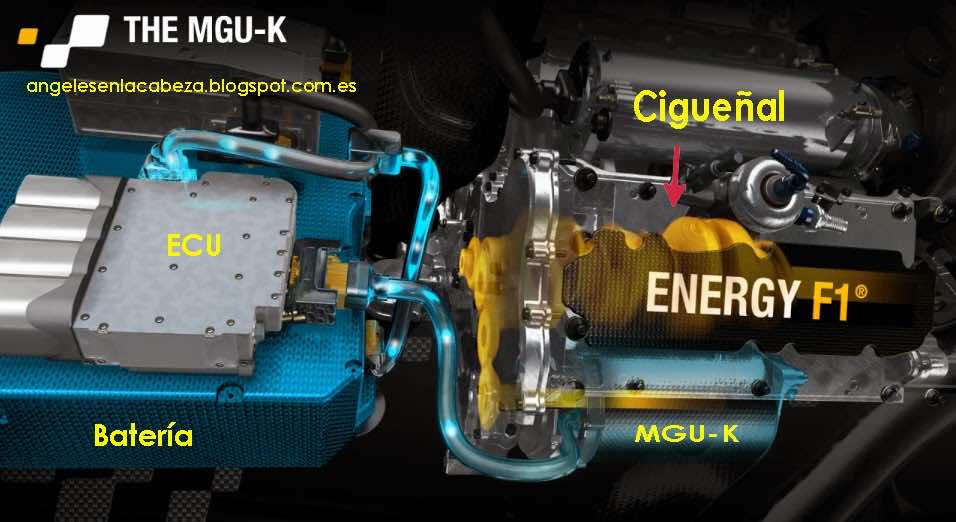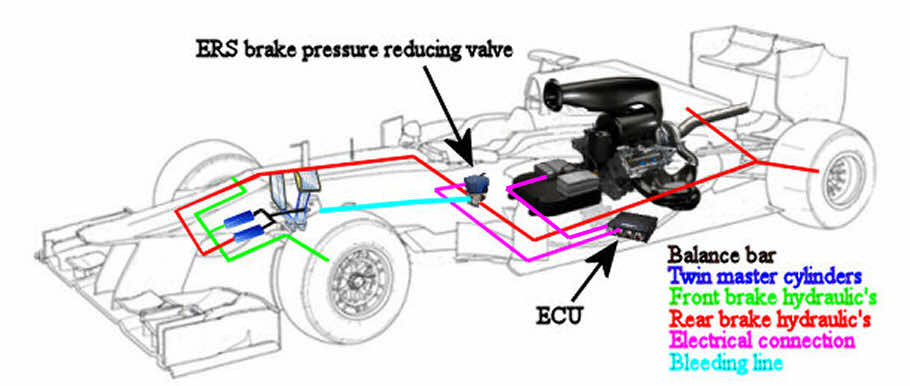People who follow Formula One can easily appreciate the complexity and sheer scale of the engineering behind such fast cars and making them last several hours on the track. Not only these cars continue to advance swiftly and steadily, we get new innovative ideas that are eventually used in normal cars. Normally when a car breaks, a lot of energy is lost and converted into heat energy released by the heavy friction with the ground. But, in F1 circles, we can afford neither as we need to conserve energy for boosting it back immediately and also the the tires of an F1 car would burst if more friction was to be created between them and the ground.
Formula One engineers therefore devised an ingenious way that captures the kinetic energy of the vehicle while it is being braked and store it all up in a supercharger for a superboost later. Here is the amazing video:

So, the insane acceleration of every Formula one car after a sharp turn has finally been explained. The system named MGU-K or Motor Generation Unit- Kinetic can slow down the car and also store the energy for a quick boost. The resistive force of the generators are used to a good effect here. But, there are rules on how much energy the Formula cars can store and use per lap and it is 130 Brake HP. So, effectively managing when to break can provide you the extra boost you need to suddenly get ahead of rivals. So, it is never just about the fastest car on the circuit at all. It is more about the tactics and dynamics that each driver and his pit team decides before each race begins!


